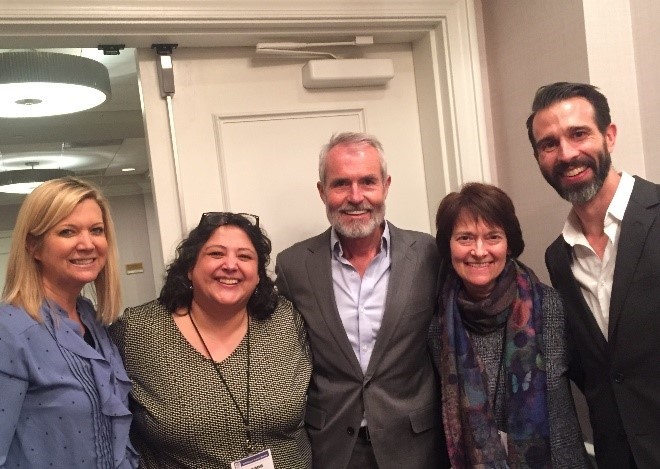Community Collaborations Learning Lab
 Systems Redesign
“Don’t underestimate what we can learn from one another,” Dr. Jerry Milner, Associate Commissioner of the Children’s Bureau, said to the room of grantees from cohort 1 and cohort 2 of the Community Collaborations to Strengthen and Preserve Families grant during the 2020 Annual Grantee Meeting in Washington, DC. Leaders from public child welfare agencies and nonprofits that are implementing promising primary prevention services around the country joined the meeting by phone. The goal of the Learning Lab was to utilize the collective expertise and experiences of participants to share ideas and inspire innovations around strengthening community-based primary prevention efforts.
Paul DiLorenzo, interim executive director of the Philadelphia Children's Alliance, led the first discussion on the need for systems redesign to better support children and their families. The Center for Family Life, Mr. DiLorenzo noted, was an early pioneer of this work over 40 years ago. Sister Mary Paul Janchill and Sister Mary Geraldine Tobia realized that children in their residential care programs were not adjusting well and had a strong desire to return to their families and communities. Seeing a need for change, the Sisters, along with community partners, started the Center for Family Life in Sunset Park, Brooklyn, to provide an alternative to traditional social services.
Instead of intervening after a family is already in crisis, the Center offers support to all families in the community. Anyone can access benefits support, family counseling, and employment and business development services. The Center also offers afterschool programming at elementary, middle, and high schools within walking distance of the agency.
When families need more involved support, the Center partners with parents to keep their children safe and in resource families close to home. One example that stood out to Dr. Milner when he visited the Center in the early 1990s was a biological parent and resource parent diligently working together to promote reunification. According to Dr. Milner, this experience shined a light on what the foster care system can and should be for families. When he asked Sister Mary Paul how they were able to get staff and foster families to transform how they work with families, she said, “[It was] our expectation. It requires a culture shift but also a values shift.”
This culture and values shift can also be seen in Casey Family Programs' Communities of Hope (COH). Located in sites across the country, each COH program operates under the framework that children do well in strong families and families do best when they live in supportive communities. Mr. DiLorenzo, formerly with Casey Family Programs, said the success of these programs has come from shifting “the child welfare field out of the mentality of being the emergency room for all social services.” When this happens, he continued, “It becomes a venue for healing and recovery for families.”
Learn more about the Community Collaborations grant initiative by watching the FRIENDS National Center for Community-Based Child Abuse Prevention peer learning call.
|